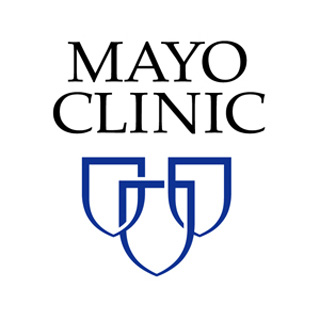Early Feasibility of the Branched TAG® Device in the Treatment of Aortic Arch Aneurysms
| Status: | Active, not recruiting |
|---|---|
| Conditions: | Cardiology, Cardiology |
| Therapuetic Areas: | Cardiology / Vascular Diseases |
| Healthy: | No |
| Age Range: | 18 - Any |
| Updated: | 10/18/2018 |
| Start Date: | April 2015 |
| End Date: | July 2021 |
Evaluation of the GORE® TAG® Thoracic Branch Endoprosthesis (Branched TAG® Device) in the Treatment of Aortic Arch Aneurysms
The purpose of this study is to assess the feasibility of the use of the GORE® TAG® Thoracic
Branch Endoprosthesis to treat aneurysms involving the aortic arch
Branch Endoprosthesis to treat aneurysms involving the aortic arch
Inclusion Criteria:
1. Presence of aortic aneurysm involving the aortic arch deemed to warrant surgical
repair which requires proximal graft placement in Zone 0 or Zone 1:
1. Fusiform (≥ 55 mm), or
2. Fusiform (>2 times native aortic diameter), or
3. Saccular (no diameter criteria)
2. Subject is considered a high risk candidate for conventional open surgical repair at
the discretion of the Investigator
3. Age ≥18 years at time of informed consent signature
4. Subject is capable of complying with protocol requirements, including follow-up
5. Informed Consent Form (ICF) is signed by Subject or legal representative
6. Must have appropriate proximal aortic landing zone, defined as:
1. Must require placement of the proximal extent of the Aortic Component in Zone 0
or Zone 1 for exclusion of the lesion
2. Acceptable proximal landing zone outer curvature length for the required device
3. Landing zone inner diameters between 16-48 mm in Zone 1 Subjects and 24-48mm in
Zone 0 Subjects
4. Landing zone, which must include either the brachiocephalic or left common
carotid native ostium, cannot be aneurysmal, heavily calcified, or heavily
thrombosed
7. Must have appropriate distal aortic landing zone, defined as:
1. Outer curvature length must be ≥2cm proximal to the celiac artery
2. Aortic inner diameters between 16-48 mm (diameter must be between 16-42mm if
using distal TAG® Device extension)
3. Landing zone cannot be aneurysmal, heavily calcified, or heavily thrombosed
4. Landing zone in native aorta or previously implanted GORE® TAG® Device
8. Must have appropriate target branch vessel landing zone, defined as:
1. Length of ≥3 cm proximal to first major branch vessel if using Aortic Component
with 8 mm portal diameter, or length of ≥2.5 cm proximal to first major branch
vessel if using Aortic Component with 12 mm portal diameter (required for Zone 0
Subjects)
2. Target branch vessel inner diameters of 6-15 mm if using Aortic Component with
8mm portal diameter, or inner diameters of 11-18 mm if using Aortic Component
with 12mm portal diameter (required for Zone 0 Subjects)
3. Target branch vessel landing zone must be in native aorta that cannot be
aneurysmal, heavily calcified, or heavily thrombosed
Exclusion Criteria:
1. Concomitant aneurysm/disease of the ascending aorta, or abdominal aorta requiring
repair
2. Previous endovascular repair of the ascending aorta
3. Previous endovascular repair of the DTA with a non-Gore device
4. Surgery within 30 days of treatment
5. Infected aorta
6. Dissection of the aorta
7. Intramural hematoma of the aortic arch or DTA without aneurysm
8. Life expectancy <2 years
9. Myocardial infarction or stroke within 6 weeks prior to treatment
10. Patient has a systemic infection and may be at increased risk of endovascular graft
infection
11. Pregnant female at time of informed consent signature
12. Degenerative connective tissue disease, e.g. Marfan's or Ehler-Danlos Syndrome
13. Participation in another drug or medical device study within one year of study
enrollment
14. Known history of drug abuse within one year of treatment
15. Significant thrombus or atheroma in the aortic arch
16. Tortuous or stenotic iliac and/or femoral arteries preventing introducer sheath
insertion and the inability to use a conduit for vascular access
17. Planned coverage of celiac artery
18. Patient has known sensitivities or allergies to the device materials
19. Patient has known hypersensitivity or contraindication to anticoagulants or contrast
media, which is not amenable to pre-treatment
20. Previous instance of Heparin Induced Thrombocytopenia type 2 (HIT-2) or known
hypersensitivity to heparin
21. Diameter taper outside of the device sizing range between proximal and distal landing
zones of aorta and the inability to use additional devices of different diameters to
compensate for the taper
22. Mycotic aneurysm
23. Persistent refractory shock (systolic blood pressure <90 mm Hg)
24. Patient has body habitus or other medical condition which prevents adequate
visualization of the aorta
We found this trial at
6
sites
3400 Spruce St
Philadelphia, Pennsylvania 19104
Philadelphia, Pennsylvania 19104
(215) 662-4000

Hospital of the University of Pennsylvania The Hospital of the University of Pennsylvania (HUP) is...
Click here to add this to my saved trials
University of Michigan The University of Michigan was founded in 1817 as one of the...
Click here to add this to my saved trials
Lebanon, New Hampshire 03756
Principal Investigator: Mark Fillinger, MD
Click here to add this to my saved trials
Click here to add this to my saved trials
Mayo Clinic Rochester Mayo Clinic is a nonprofit worldwide leader in medical care, research and...
Click here to add this to my saved trials
Stanford, California 94305
Principal Investigator: Michael Fischbein, MD
Click here to add this to my saved trials

